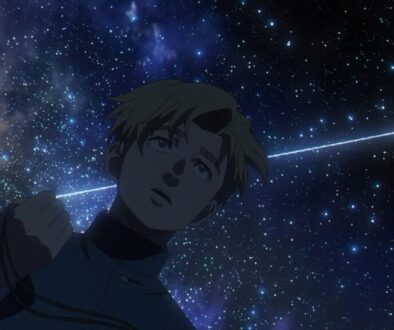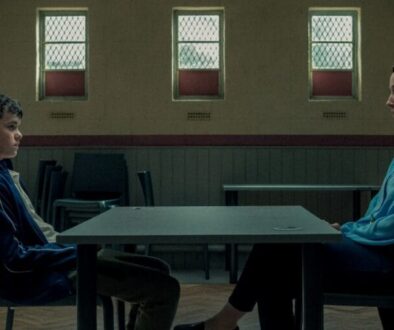The Creation of a Tearjerker: What Makes Your Lie in April So Emotionally Powerful?
Have you ever found yourself revisiting Your Lie in April every spring, tissues in hand, bracing for the emotional rollercoaster that awaits? It’s like an annual pilgrimage to heartbreak hotel, yet we willingly embark on this journey time and again. But what is it about this anime that tugs so relentlessly at our heartstrings? What makes us voluntarily sit through an experience we know will leave us emotionally wrecked? Well, it’s not just the story, and it’s not just the music. It’s a masterful blend of writing, pacing, and artistry that ensures Your Lie in April isn’t just an anime—it’s an experience. One that stays with you, long after the final notes have been played.
Catch a support chair or something, for this Reaper is going to change tones and sing you poetry.
The Art of Emotional Composition: Writing That Resonates
At the heart of Your Lie in April lies a narrative that masterfully orchestrates the highs and lows of human emotion. Naoshi Arakawa, the maestro behind this masterpiece, didn’t just stumble upon this emotional depth by chance. In an interview, Arakawa confessed, “I like to make my audience cry.” His mission was clear: to craft a story so poignant that it would move even his editor to tears—a goal he achieved with resounding success.
But how does the writing achieve this? It’s all about relatability and authenticity. Arakawa spent time observing real students, immersing himself in their world to capture the genuine essence of teenage life. He even shared drafts with students to ensure the story resonated with them. This dedication to authenticity allows viewers to see reflections of their own experiences in the characters’ journeys, making the emotional punches hit closer to home.
Additionally, Your Lie in April doesn’t shy away from tough themes. Love, trauma, regret, and the weight of expectations are all interwoven into its narrative. Kousei Arima’s struggles with music aren’t just external conflicts; they are deeply personal battles against the ghosts of his past. Having grown up under the rigid, borderline abusive tutelage of his mother, Kousei associates the piano with both love and pain. When she dies, so does his ability to hear the notes, a psychological block that prevents him from playing. This intricate portrayal of childhood trauma is what makes Kousei’s journey so harrowing and, ultimately, so inspiring.
Kaori Miyazono, on the other hand, serves as Kousei’s antithesis. Her philosophy of living life to the fullest, despite knowing her days are numbered, is a powerful contrast to Kousei’s stagnation. This contrast isn’t just for dramatic effect—it’s a central theme of the story. Kaori represents the fleeting nature of life, while Kousei represents the weight of the past. Their interactions are designed to remind us that, no matter how much time we have, what matters most is how we choose to live it.
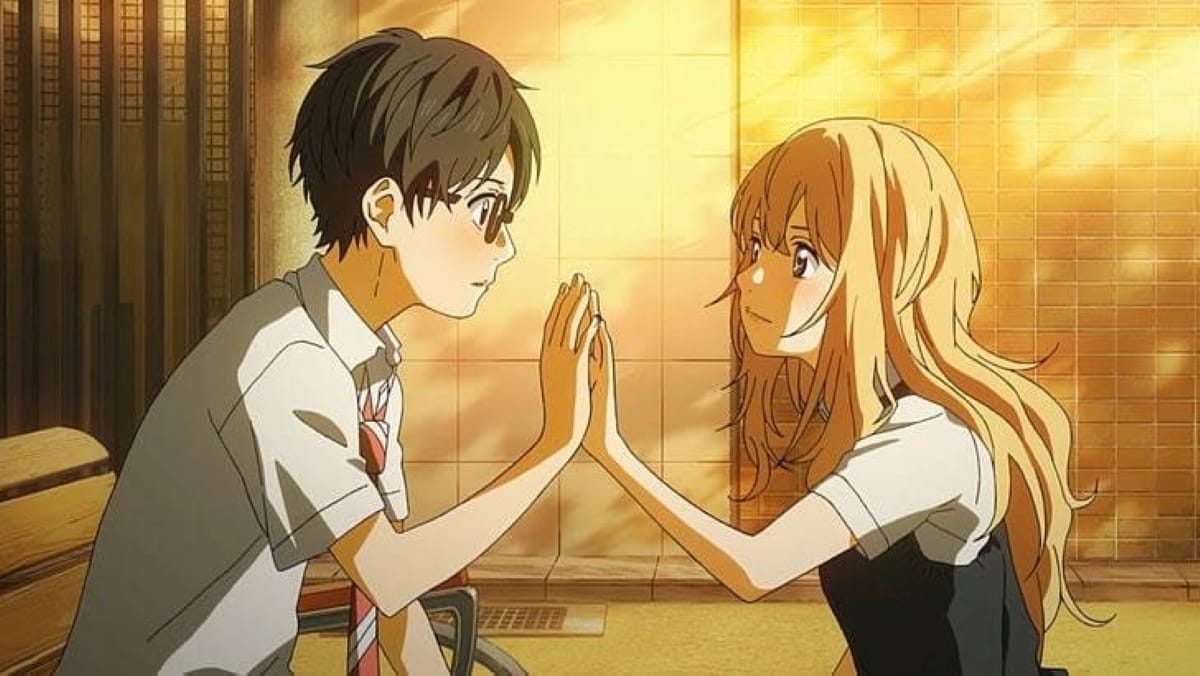
Pacing: The Delicate Dance of Light and Shadow
Pacing in storytelling is akin to rhythm in music—it’s what makes the difference between a forgettable tune and a haunting melody. Your Lie in April waltzes gracefully between moments of joy and sorrow, never lingering too long in either. This balance ensures that when the crescendo of tragedy hits, it leaves an indelible mark on the audience.
The series doesn’t rush to unveil its heartbreak. Instead, it allows us to bask in the warmth of budding friendships, the thrill of young love, and the passion for music. These lighter moments serve as the calm before the storm, making the impending tragedy all the more devastating. It’s this ebb and flow that keeps viewers engaged, their emotions swaying in tandem with the narrative’s rhythm.
Moreover, the anime’s pacing mirrors the unpredictability of real life. Just like in reality, happiness isn’t static—it’s fleeting, interwoven with struggles and setbacks. By structuring the story this way, Your Lie in April doesn’t just tell us a story; it makes us feel like we’re living it alongside the characters. It lulls us into moments of laughter, only to pull the rug out from under us, leaving us gasping for air. And that’s why it hits so hard—it feels real.
This masterful pacing is further reinforced through its episodic structure. Unlike many coming-of-age anime, Your Lie in April doesn’t introduce its core conflict all at once. Instead, it lets us slowly peel away layers of Kousei’s trauma, Kaori’s illness, and their relationship. By the time the final episodes arrive, the weight of everything that has been built up crushes the audience with full force, making it impossible to hold back tears.
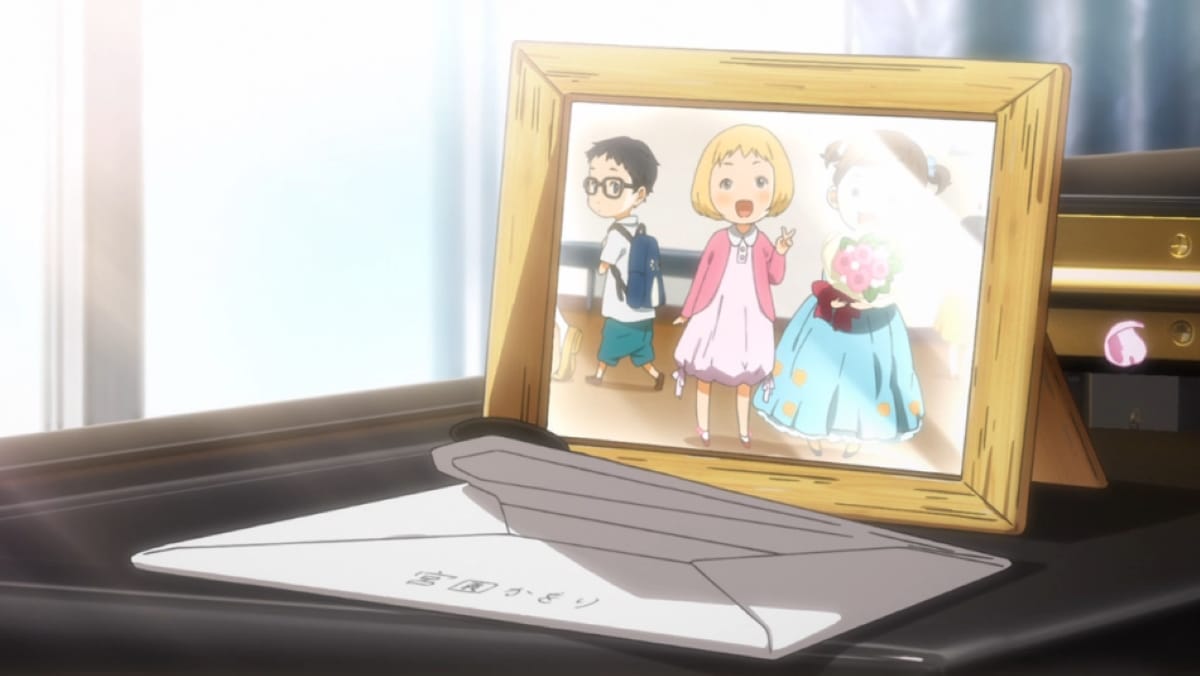
Visual Symphony: Artistic Elements That Speak Volumes
Animation is more than just moving pictures; it’s a canvas where colors, light, and symbolism converge to tell a story beyond words. Your Lie in April employs a rich palette of visual metaphors that amplify its emotional impact. One of the most striking symbols is the depiction of water. When Kousei grapples with his inability to hear the piano, he describes it as being submerged in a deep, dark ocean—a visual representation of his drowning psyche. This imagery immerses viewers into his internal struggle, making his pain palpable.
Moreover, the use of light and color evolves with the narrative. Bright, vibrant hues accompany moments of hope and inspiration, especially in scenes featuring Kaori, whose presence illuminates Kousei’s world. Conversely, muted tones and shadows dominate scenes of despair, mirroring the characters’ emotional states. This deliberate interplay of visuals not only enhances the storytelling but also evokes visceral reactions from the audience.
Another genius artistic choice is how performances are animated. Instead of simply showing a character playing an instrument, the series translates emotions into surreal, dreamlike sequences. When Kousei performs, we don’t just hear the music—we see his struggle, his fear, his growth. The animation transforms the act of playing into a deeply emotional, almost spiritual experience, reinforcing the idea that music is more than sound—it’s an extension of the soul.
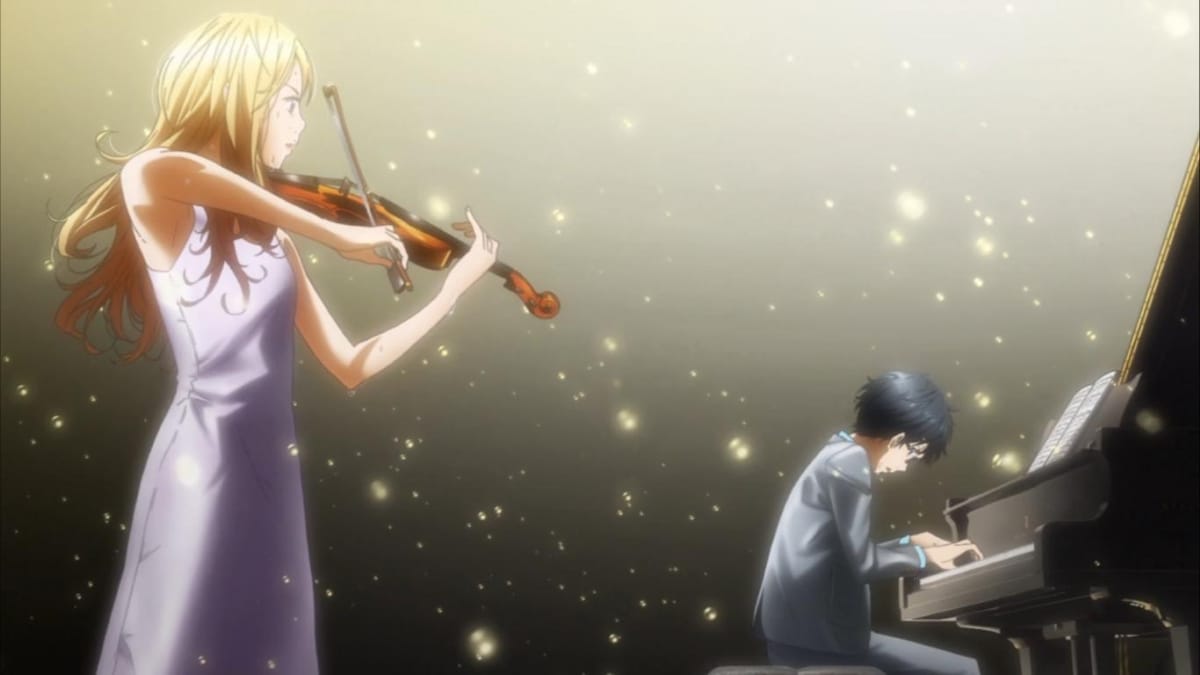
Behind the Curtain: Arakawa’s Inspirations and Intentions
Understanding the origins of Your Lie in April adds another layer to its emotional depth. Surprisingly, Arakawa wasn’t a classical music aficionado. In fact, he leaned more towards heavy metal bands like Iron Maiden and Black Sabbath. His foray into a music-themed narrative was a deliberate choice to explore new territory after working on sports manga. To authentically depict the world of classical music, he conducted extensive research, consulting with composers and musicians to breathe life into the story’s musical elements.
Arakawa’s primary intent was clear: to craft a narrative that would evoke profound emotion. He admitted, “Honestly, I created this work just to make the editor-in-charge cry.” This unwavering commitment to eliciting tears is evident in every facet of the series, from character development to plot progression.
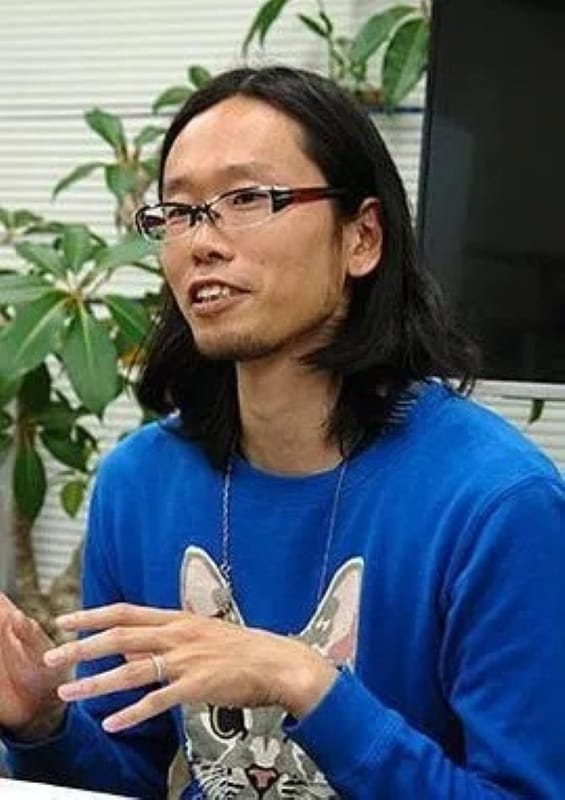
The Resonance of Reality: Why We Keep Coming Back
As the cherry blossoms bloom and another April unfolds, we find ourselves drawn once more to this poignant tale. It’s a testament to the series’ enduring impact that, despite knowing the outcome, we embark on this journey anew, embracing the tears as much as the smiles.
Spring without you is coming, yet in the echoes of your melody, you remain ever present.
Discover more from Ge-erdy Verse
Subscribe to get the latest posts sent to your email.


